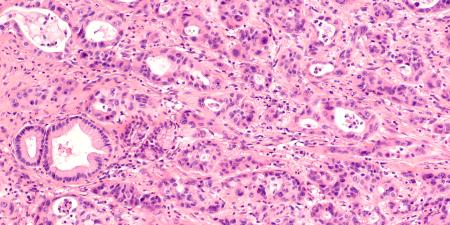Abstract
The AMA Code of Medical Ethics offers guidance on the significance of palliative surgical care in Opinion 5.6, “Sedation to Unconsciousness in End-of-Life Care,” and Opinion 5.5, “Medically Ineffective Interventions.” The American Medical Association’s House of Delegates policies further outline ways in which physicians should navigate palliative care intervention through spreading awareness of and advancing research on palliative care and improving reimbursement practices. This article defines palliative care, examines the risks associated with palliative surgery, and discusses AMA Code guidance.
Introduction
Roughly 12.5% of all surgeries are palliative.1 Palliative surgery aims to alleviate psychological, physical, emotional, and spiritual suffering of patients. Palliative surgical risks illuminate the importance of ethical questions about the nature and scope of palliation’s role in a care plan and how to balance respect for patient autonomy and physicians’ duties to uphold the principles of beneficence and nonmaleficence. American Medical Association (AMA) Code of Medical Ethics’ opinions recognize the significance of palliative care. AMA House policies, which support AMA opinions, also describe physicians’ role in motivating palliative approaches to practice.
Defining Palliative Care
Ideally, patients, their loved ones, and clinicians share understandings of what palliative care means. To be clear, noncurative surgical interventions aim to prevent symptoms in asymptomatic patients (eg, preventive mastectomy); palliative surgery aims not to cure but to relieve symptoms in symptomatic patients. Palliation can occur alongside recovery and is not just reserved for patients at the end of life.
End-of-Life Palliative Care
The AMA Code recognizes death as a risk of palliative surgery, especially in patients with late-stage cancer. Opinion 5.6, “Sedation to Unconsciousness in End-of-Life Care,” states that a “duty to relieve pain and suffering is central to the physician’s role as healer and is an obligation physicians have to their patients.”2 The AMA Code also emphasizes a physician’s duty to “balance obligations to respect patient autonomy and not to abandon the patient with obligations to be compassionate, yet candid, and to preserve the integrity of medical judgment” when dealing with palliative care requests.3 In the case of palliation, it is important to note that a palliative intervention is not futile, as the “meaning of the term ‘futile’ depends on the values and goals of a particular patient in specific clinical circumstances.”3
Roles of Physicians
The AMA House of Delegates “support[s] efforts to clarify coding guidance or development of codes to capture ‘comfort care,’ ‘end-of-life care,’ and ‘hospice care’” in house policy H-70.915, “Good Palliative Care.”4 House policy H-70.915 also recognizes some clinicians’ lack of awareness of palliative care in encouraging clinician education programs. One study found that some surgeons believe palliative care is “irrelevant to quality of life or symptom relief.”5 Such bias might reflect inadequate training, as one study, for example, noted that 76.1% of colorectal surgeons received no formal training in palliative care.6 AMA House of Delegates policies recognize the significance of palliative care in all clinical specialties, stating that “all physicians [should] become skilled in palliative medicine” and encouraging “education programs for all appropriate health care professionals, and the public.”4 The AMA Code further supports “consult[ing] with a multi-disciplinary team (if available), including an expert in the field of palliative care, to ensure that symptom-specific interventions have been sufficiently employed.”2
Palliative Practice
The AMA Code guidance on informed consent to palliative surgery suggests the importance of making patients aware of consequences of inappropriate treatment. Opinion 5.5, “Medically Ineffective Interventions,” urges physicians to “discuss with the patient the individual’s goals for care, including desired quality of life, and seek to clarify misunderstandings.”3 The AMA Code also recommends including a patient’s surrogate in conversations “even when the patient retains decision-making capacity” in case the patient loses capacity.3
AMA House of Delegates policies also encourage “research in the field of palliative medicine to improve treatment of unpleasant symptoms that affect quality of life for patients” and “research into the needs of dying patients and how the care system could better serve them.”4 One example could be “examining the degree to which palliative care reduces the requests for euthanasia or assisted suicide.”7 With research shedding light on how palliation can be “integrated into the overall provision of care and services,”8 House policy H-140.966, “Decisions Near the End of Life,” endorses efforts to improve palliative practice.7 House policy H-70.915 also urges more palliative care reimbursement, promotes “coordination and continuity of care, ‘maintenance’ level services, counseling for patient and family, use of multidisciplinary teams, and effective palliation of symptoms.”4 The policy looks to extend reimbursement for physicians’ “prolonged time spent on patients’ care outside of the face-to-face encounter in non-hospital settings.”4
Physical, emotional, psychological, and spiritual benefits of palliative care are recognized in both AMA Code of Medical Ethics’ opinions and AMA House of Delegates policies that can be used to guide physicians’ incorporation of palliative care into their practices.
References
- Krouse RS, Nelson RA, Farrell BR, et al. Surgical palliation at a cancer center: incidence and outcomes. Arch Surg. 2001;136(7):773-778.
-
American Medical Association. Opinion 5.6 Sedation to unconsciousness in end-of-life care. Code of Medical Ethics. Accessed December 8, 2020. https://www.ama-assn.org/delivering-care/ethics/sedation-unconsciousness-end-life-care
-
American Medical Association. Opinion 5.5 Medically ineffective interventions. Code of Medical Ethics. Accessed December 8, 2020. https://www.ama-assn.org/delivering-care/ethics/medically-ineffective-interventions
-
American Medical Association. Good palliative care H-70.915. Accessed July 31, 2021. https://policysearch.ama-assn.org/policyfinder/search/palliative%20care/relevant/1/
- Suwanabol PA, Kanters AE, Reichstein AC, et al. Characterizing the role of US surgeons in the provision of palliative care: a systematic review and mixed-methods meta-synthesis. J Pain Symptom Manage. 2018;55(4):1196-1215.e5.
- Suwanabol PA, Reichstein AC, Suzer-Gurtekin ZT, et al. Surgeons’ perceived barriers to palliative and end-of-life care: a mixed methods study of a surgical society. J Palliat Med. 2018;21(6):780-788.
-
American Medical Association. Decisions near the end of life H-140.966. Accessed December 8, 2020. https://policysearch.ama-assn.org/policyfinder/detail/H-140.966%20Decisions%20Near%20the%20End%20of%20Life?uri=%2FAMADoc%2FHOD.xml-0-497.xml
-
National Academies of Sciences, Engineering, and Medicine. Models and Strategies to Integrate Palliative Care Principles Into Care for People With Serious Illness: Proceedings of a Workshop. National Academies Press; 2017.



